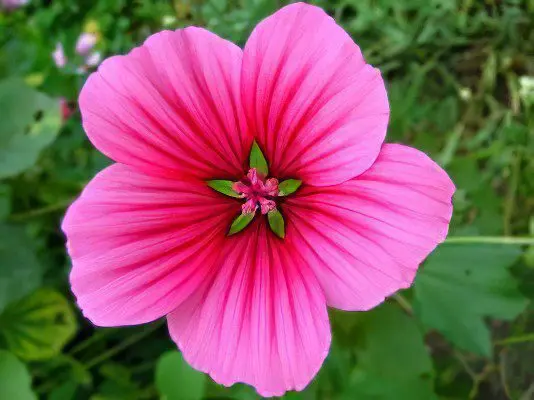Contents
Useful properties and application of khatma
Description of the hatma

Hatma – perennial or annual herbaceous plant, sometimes a shrub up to two meters tall. The leaves of the plant are alternate, lobed, covered with stellate hairs. Single flowers form spike-shaped or racemose inflorescences at the ends of the stems, they are yellow, pink or purple. Hatma blooms profusely from mid-July until autumn. The homeland of the plant is South America, Syria, North Africa. In the wild, khatma grows in Western Siberia, in the central regions of the European part of Russia.
Useful properties of khatma
The chemical composition of the plant is not well understood. It is only known that all parts of the hatma contain a lot of mucus and rubbery substances. In addition, starch was found in the roots, and alkaloids and ascorbic acid were present in the leaves. In folk medicine, roots and leaves are used. The roots are harvested in autumn, and the leaves – during the flowering period. In official medicine, the plant is not used.
Application of hatma
Various dosage forms of the plant are widely used in folk medicine. Decoctions and infusions have excellent enveloping and anti-inflammatory properties. Chatma remedies are used for colds, coughs, diarrhea and some other diseases of the gastrointestinal tract.
A decoction of the leaves of Khatma is recommended for respiratory diseases, diseases of the stomach and intestines are treated with infusion. When coughing, the decoction is used as an expectorant. A decoction of the roots is good for headaches, it is also prescribed as an astringent for diarrhea. For skin diseases and scrofula, a decoction of the whole plant is used.
Decoction: 10 g of dry or fresh raw materials must be poured with two glasses of boiling water, boiled for 5 minutes. in a sealed container, leave for at least four hours, strain through cheesecloth. It is recommended to take the remedy 4-5 times a day, 1 tablespoon.
Hatma thuringian
This is a tall perennial pubescent plant. The leaves are large, three- or five-lobed, gray-green in color, grow alternately. The flowers have notched petals and numerous stamens of a beautiful pink hue. They are located singly in the corners of the upper leaves, collected in loose brushes. The fruit grows in the form of a disk, breaking up into sectors, inside there are 20–25 seeds.
Khatma Thuringian is common in the European part of Russia, in Belarus, Central Asia, Moldova, Ukraine and the Caucasus. It grows in thickets of bushes, in clearings, in light forests, upland meadows and stony steppes. The plant can be found in the mountains at an altitude of 2000 meters above sea level.
In medicine, the aerial part of the plant and the roots are used. The grass contains a lot of mucus, as well as starch, alkaloids, flavonoids, fatty oil and vitamin C. Khatma-based preparations have an enveloping, expectorant and anti-inflammatory effect. They are used for gastritis, tracheobronchitis, skin diseases and scrofula. Fresh leaves of the plant are used in the treatment of purulent wounds, a decoction of flowers is drunk for abdominal pain and respiratory infections.
Contraindications to the use of khatma
Before using medicines based on khatma, it is advisable to consult a doctor. Contraindication is hypersensitivity and individual intolerance. It is not recommended to use their preparations during pregnancy and lactation.









